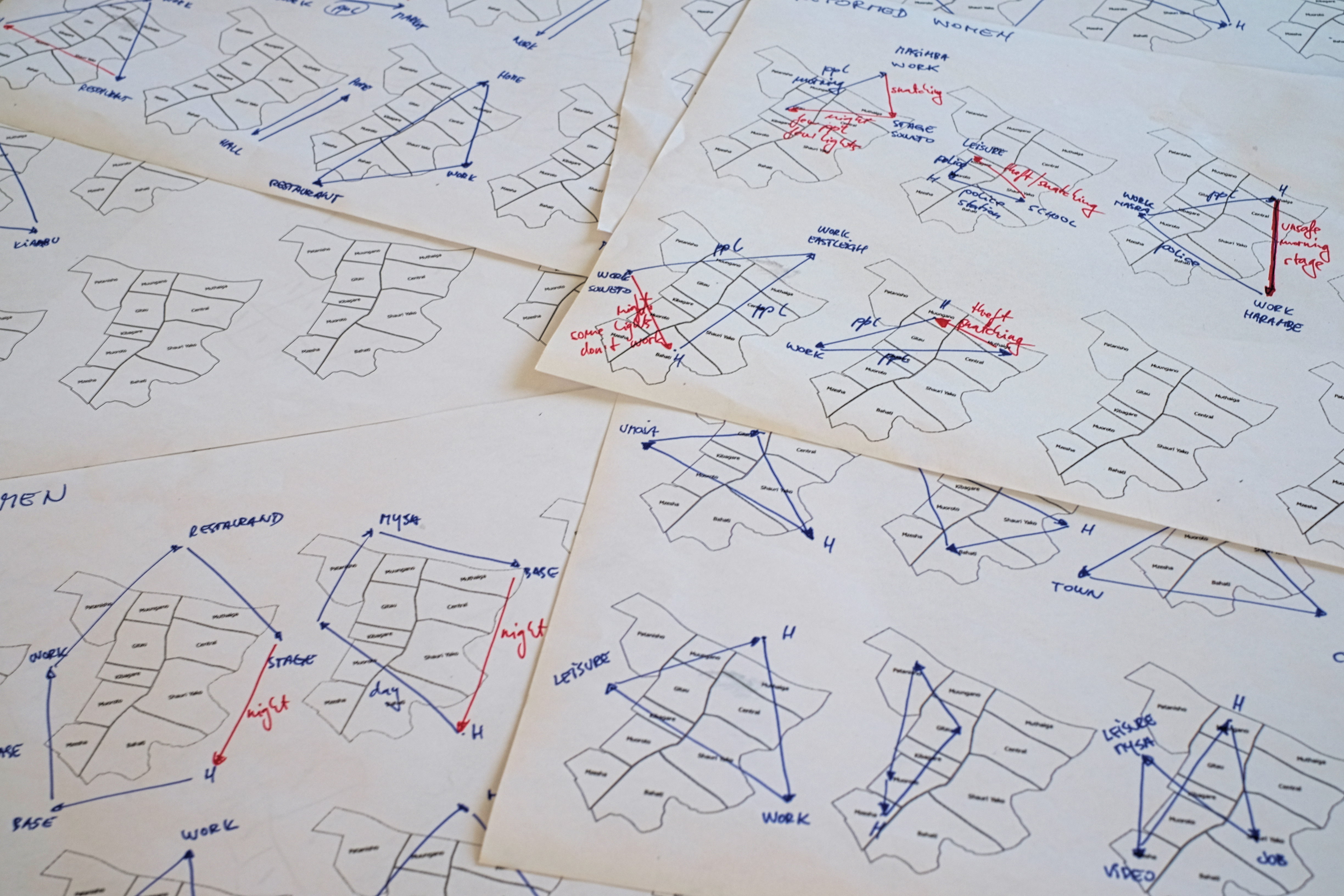Mobility of Men and Women in Informal Settlement Related to Seeking Opportunities
January 9, 2017Mapping Safe and Unsafe Areas in Informal Settlements
March 30, 2017How are spaces in informal settlements traversed differently according to gender? Which paths are the most travelled in a community, when and why? Does gender influence perceptions of safety when it comes to movements within the informal settlement?
These are some of the questions we wanted to answer during participatory mapping to support Kenya Informal Settlement Improvement Project (KISIP) in Soweto Kayole. During the exercise, some 60 participants (35 men and 25 women) were asked to identify two locations – apart from their home – that they frequent most often. The aim of this exercise was to understand the perceptions of safety of men and women while moving through the settlement; whether in their movements to and from these locations, participants felt safe or unsafe, and why they felt a certain way. We named the method the triangle method of mobility.
The 35 men interviewed drew 110 segments while 25 women drew 68 segments. Each segment represents a path between two locations that individual visits every day. The red colour indicates that a person felt unsafe walking along the path, while the blue colour indicates that a person felt safe walking between two locations in the settlement.
Men identified only 10% of the segments as unsafe, while women identified 34% segments as unsafe. The two circles represent all of the segments, or paths, of men and women combined.
Overall, all men — young and old — move much more freely within Kayole Soweto. Men of all age groups reported very few areas of insecurity in the settlement and were thus much more mobile than women. Young men, in particular, identified few unsafe areas, which implies a low perception of insecurity of this age group. However, they stated that they constantly change their routes as a conscious strategy to enhance personal security and to avoid police who often targets youth under a pretense of being associated with criminal activities. Additionally, older men added that to enhance individual safety it is better to use the main road rather than side streets.
Overall, women travelled within and outside the settlement less than men. Women of all ages reported planning their routes from one point to another in advance to avoid areas perceived as unsafe. Women mobility patterns are dynamic. They change their routes constantly as a security precaution to avoid areas perceived as insecure. They also reported that to enhance their security they walk where the streetlights are and along the main roads. Young women identified their neighbourhoods and their homes as the places they felt most safe.




